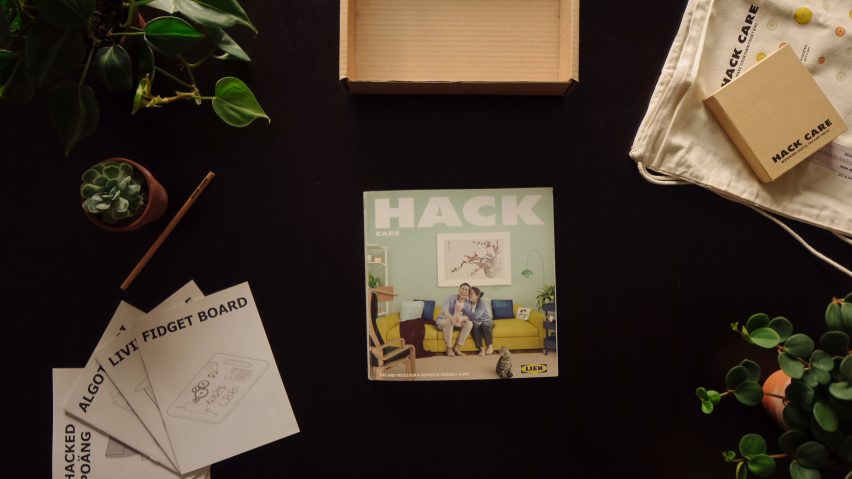
Hack Care is an IKEA-style catalogue of DIY adjustments for dementia-friendly homes
Lekker Architects and Lanzavecchia + Wai have designed an IKEA-inspired manual filled with tips and tricks on how to hack the Swedish company's products to better serve people living with dementia.
Commissioned by Singapore-based organisation Lien Foundation, the 240-page Hack Care book contains over 50 DIY projects.
These alterations can be made to various IKEA furniture and homeware items to create a home that both comforts people with dementia and supports their caregivers.
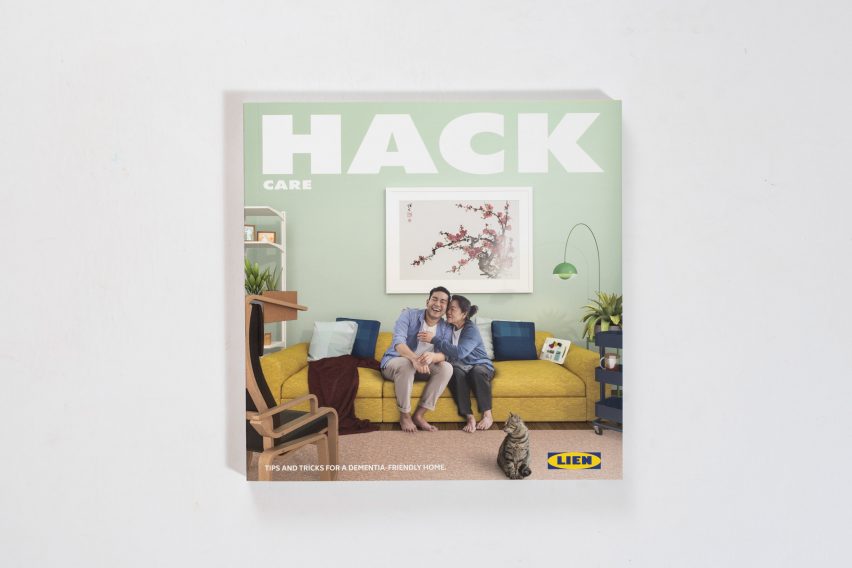
The book, which is made to look like an IKEA catalogue, also contains essays and stories about living with dementia – a degenerative brain disorder that affects more than fifty million people, mainly those in their 60s or older.
The catalogue comes as part of a kit that also includes four instruction booklets, a "make your own fidget bag" with a zipper, buttons, key ings and ribbon, sticky notes and tabs and a pencil.
As the creators explain, the book is designed to encourage caregivers to come up with their own hacks that would best suit their home and personal needs, aiming to "keep their loved ones with dementia engaged, empowered and enabled to age in place for as long as possible".
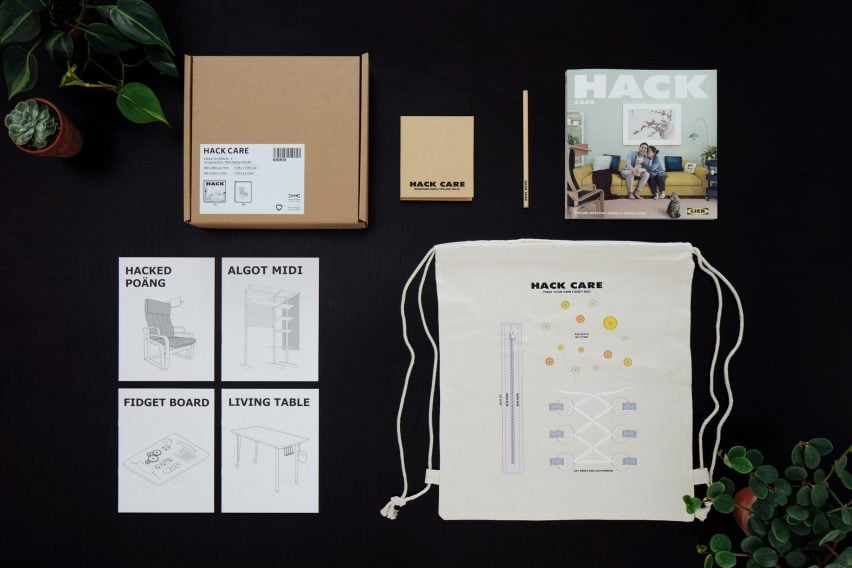
"Living with dementia is daunting and our everyday home environments do not always anticipate or meet the unique needs of people battling cognitive and physical frailty," said the Lien Foundation.
"Many academic papers on dementia-friendly environments offer guidelines or principles for caregivers and seniors themselves, but a gap remains between principle and practice," it continued.
"It was with an aim to bridge this gap that the Lien Foundation commissioned Lekker Architects and Lanzavecchia + Wai to weave creativity with practical design experience and improve the homes and lives of persons affected by dementia."
Lien Foundation and the two design studios chose to work with IKEA products for their accessibility and ease of use – the Hack Care book is not affiliated with IKEA.
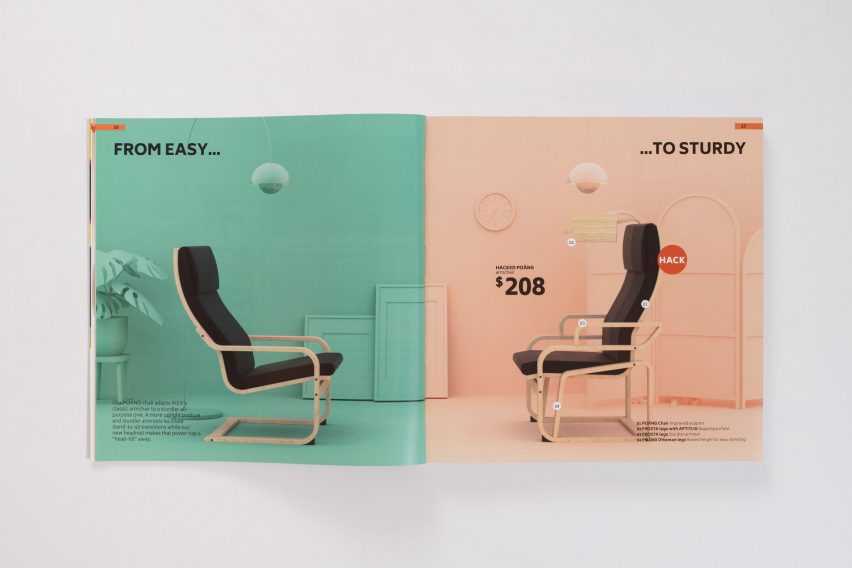
Hacks can be used to assist a range of activities from mealtimes to everyday routines.
For instance, the book offers tips on the use of colours and lights to influence behaviour – eating from blue-coloured plates is said to increase food intake, while drinking from a red cup encourages water consumption.
Hacks in the book include adapting the IKEA Poäng armchair by tilting it forward to provide more back support, adding a surface by the headrest for napping, securing additional armrests and adding another base structure to make it easier to stand up.
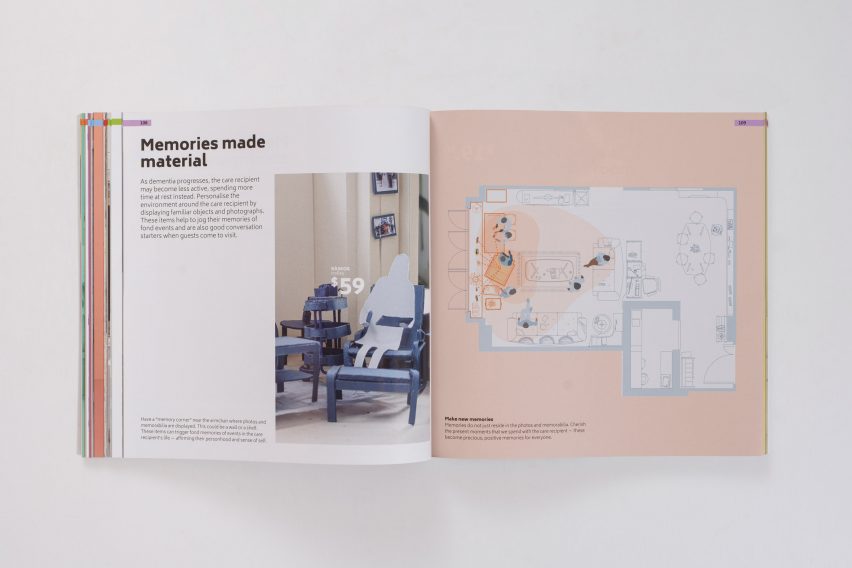
The catalogue also recommends placing the upgraded Poäng chair inside a set of IKEA Algot planner shelves to offer a flexible care space and to also create a "cosy corner".
Styling the chair and shelves with a rug, a plant and other familiar, homely objects helps "humanise" the user's environment while also organising the items needed for their care.
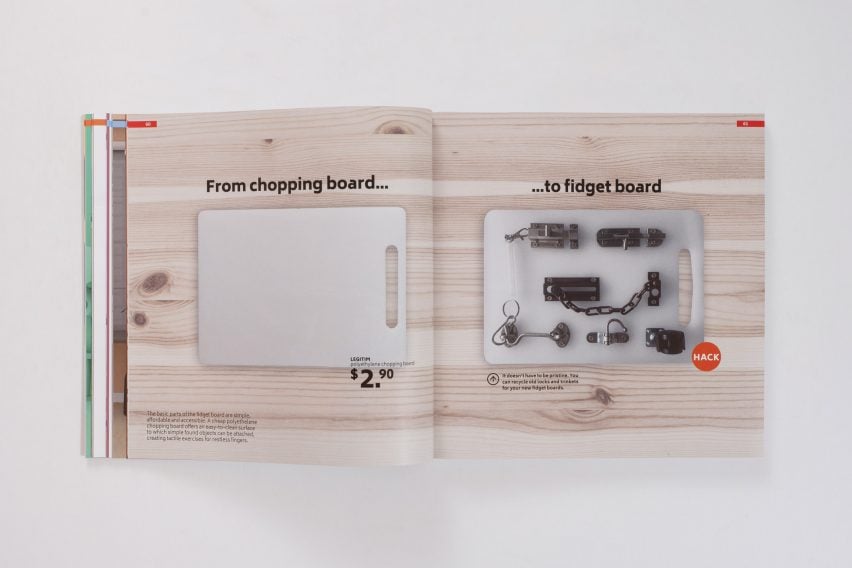
Hack Care also encourages "fidgeting" as a productive and therapeutic activity for people with dementia that can help occupy moments of boredom or soothe feelings of anxiety at various stages of cognitive decline.
Tactile surfaces for fiddling with are simple to create at home and can be customised in many different ways.
Common types of fidget designs include surfaces with paths that can be traced with a finger or items that can be moved such as beads on a string or zippers.
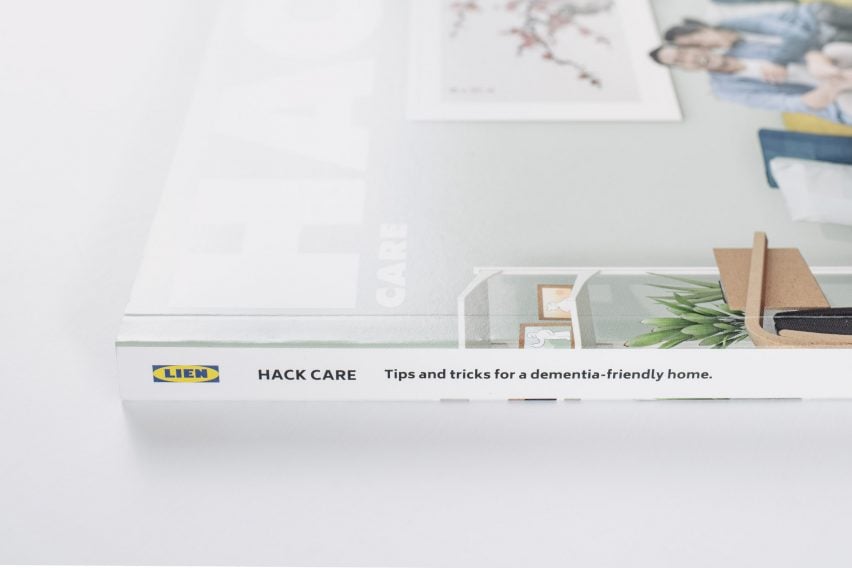
Other projects designed to help those with dementia include a virtual reality tool that recreates the effect of the visual impairments experienced by people with the syndrome, in order to help architects design better spaces.
Scottish architect David Burgher has developed a new virtual reality tool that mimics the visual impairments experienced by dementia sufferers to help architects design more suitable spaces.
By using the Virtual Reality Empathy Platform (VR-EP), developer David Burgher hopes architects will be able to better gauge appropriate lighting levels, room layouts and way-finding to improve design of care homes, hospitals and sheltered housing.